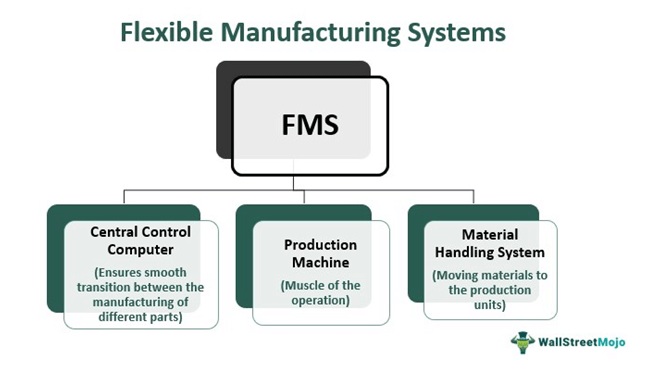Ahmedabad
(Head Office)Address : 506, 3rd EYE THREE (III), Opp. Induben Khakhrawala, Girish Cold Drink Cross Road, CG Road, Navrangpura, Ahmedabad, 380009.
Mobile : 8469231587 / 9586028957
Telephone : 079-40098991
E-mail: dics.upsc@gmail.com

How to Give Manufacturing a Leg-up
India has a great scope and potential in manufacturing, given its demographic dividend and reasonably cheap labour. However, larger investments, upskilling of workforce and upgrading infrastructure are some of the areas where more work must be done.
About India’s manufacturing Sector:
• India has the fifth largest manufacturing base in the world
• As per the second quarter report of the Quarterly Employment Survey conducted by the Union Ministry of Labour, the manufacturing sector accounted for nearly 39% of all the employment generated in the selected nine sectors.
• More than 45% of the manufacturing output is obtained from the MSME sector in India. The vast pool of human capital available in India at various skill levels offers a distinct competitive advantage to firms that conduct manufacturing activities within India.
• India’s manufacturing sector prominence is seen in sectors such as apparel and accessories, textiles, drugs and pharmaceuticals, petroleum products and motor vehicles.
Efforts initiated in manufacturing sector:
Infra-development projects
• National infrastructure pipeline
• India investment Grid – Statistics reveal that there are 15,454 projects available involving a total project cost of $1,981 billion as on May 5, 2022.
• The National Industrial Corridor Development Programme was launched to facilitate the integrated development of industrial smart cities having plug and play infrastructure along with multi-modal connectivity.
• Also, a number of Production-Linked Incentive (PLI) schemes have been announced since 2020 for various sectors that incentivise manufacturing with a goal to achieve ‘Atma Nirbhar Bharat’.
Manufacturing in Warehouses
• The Central Board of Indirect Taxes and Customs (CBIC) has brought forward a new and improved version of the programme focused on manufacturing and other operations in bonded warehouses.
• Manufacturing in warehouses results in saving working capital, which is usually scarce in case of small enterprises and helping in better positioning of MSMEs in the international market by shortening the delivery schedule in the global supply chain.
Custom Rules
• Domestic manufacturing within India is also being encouraged through statutory measures like the Customs (Import of Goods at Concessional Rate of Duty) Rules, which has also been amended from time to time to take into account the dynamic needs of the industry and trade.
Challenges in the Manufacturing sector:
Poor infrastructure
• India’s weak infrastructure continues to be a fatal flaw for the manufacturing sector.
• India uses only 3% of its GDP for infrastructure construction each year, as compared to China’s 20% of its GDP.
• Even today, India’s surface transportation systems cannot meet the expectations of modern highspeed logistics which is the backbone of efficient manufacturing.
Lack of Certified Factories
• Big companies around the world prefer to source goods from factories that are ISO or BSI certified. In China, majority of companies have required certifications, but that is difficult to find in India.
• Majority of companies in India do not even meet basic inspection standards
• Poor and erratic electricity supply is yet another drawback that puts the country’s manufacturers at a distinct disadvantage. India’s annual power gap is more than 10% and it has among the lowest per capita power consumption around the world.
What should be done to boost manufacturing in India?
Policy Intervention
• Focus should be given on making policies that seek to increase worker skills and ensure that finances actually reach the firms that need it the most.
• Speaking particularly for manufacturing firms, they require fixed capital investments, and are hurt the most by lack of adequate finance for expansion.
Infrastructure investments
• Focus on large-scale infrastructure investments will itself create enormous growth opportunities.
• Research has shown that investment in hard infrastructure also results in reduction of logistics cost of manufacturing.
Stable Power Supply
• Stable, low cost and uninterrupted power is crucial to promote growth of industries. Power availability has improved in the nation but it must be possible on industrial level to realize the benefits of manufacturing growth.
• High quality vocational training must be provided within the education system.
• It is observed that manufacturing is mainly concentrated in a few states like Gujarat and Maharashtra. States such as Andhra Pradesh, Bihar, Chhatisgarh, MP, Rajasthan also have large land areas that can contribute to the success of Indian manufacturing. The reasons behind less manufacturing activity in these states need to be carefully analyzed and state specific industrialization strategies need to be devised and implemented in mission mode taking help of the Union Government.

Address : 506, 3rd EYE THREE (III), Opp. Induben Khakhrawala, Girish Cold Drink Cross Road, CG Road, Navrangpura, Ahmedabad, 380009.
Mobile : 8469231587 / 9586028957
Telephone : 079-40098991
E-mail: dics.upsc@gmail.com
Address: A-306, The Landmark, Urjanagar-1, Opp. Spicy Street, Kudasan – Por Road, Kudasan, Gandhinagar – 382421
Mobile : 9723832444 / 9723932444
E-mail: dics.gnagar@gmail.com
Address: 2nd Floor, 9 Shivali Society, L&T Circle, opp. Ratri Bazar, Karelibaugh, Vadodara, 390018
Mobile : 9725692037 / 9725692054
E-mail: dics.vadodara@gmail.com
Address: 403, Raj Victoria, Opp. Pal Walkway, Near Galaxy Circle, Pal, Surat-394510
Mobile : 8401031583 / 8401031587
E-mail: dics.surat@gmail.com
Address: 303,305 K 158 Complex Above Magson, Sindhubhavan Road Ahmedabad-380059
Mobile : 9974751177 / 8469231587
E-mail: dicssbr@gmail.com
Address: 57/17, 2nd Floor, Old Rajinder Nagar Market, Bada Bazaar Marg, Delhi-60
Mobile : 9104830862 / 9104830865
E-mail: dics.newdelhi@gmail.com